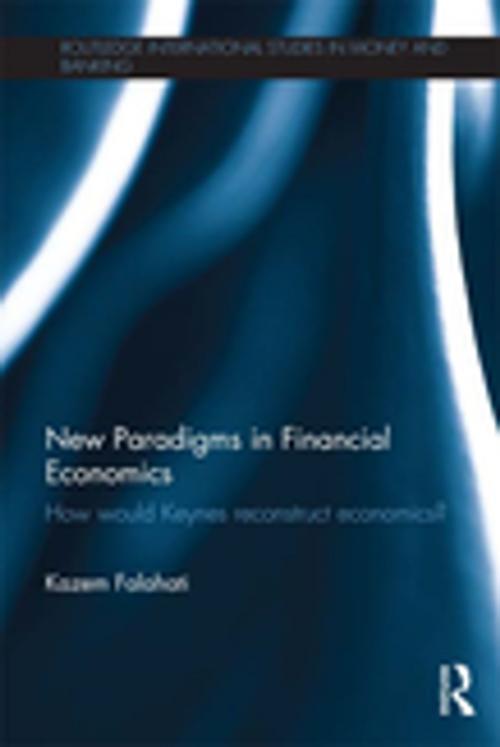New Paradigms in Financial Economics
How Would Keynes Reconstruct Economics?
Business & Finance, Economics, Money & Monetary Policy, Finance & Investing, Banks & Banking| Author: | Kazem Falahati | ISBN: | 9781136221538 |
| Publisher: | Taylor and Francis | Publication: | November 27, 2012 |
| Imprint: | Routledge | Language: | English |
| Author: | Kazem Falahati |
| ISBN: | 9781136221538 |
| Publisher: | Taylor and Francis |
| Publication: | November 27, 2012 |
| Imprint: | Routledge |
| Language: | English |
The recent global financial crisis has made the inadequacies of the scientific state of economics and finance glaringly obvious, as these disciplines gave the false reassurance that such a self-destructive phenomenon could not happen. A similar phenomenon arose in the 1930’s, when the pitfalls of the dominant economic theories were sharply exposed. Since then, the same analytical framework, in its new versions, has revealed a huge number of other empirical and experimental failures.
On the other hand, the founders of the currently dominant theories in economics and finance (i.e. the standard paradigm) such as Walras (1834-1910), Modigliani (1918-2003) and Miller (1923-2000) have identified mathematical contradictions within their own foundational models, the root cause of which no one has yet discovered. The standard paradigm has thus lost the reason for its existence in the light of experience, experiments and logical rigour. This book identifies the heuristic cause of these external and internal contradictions of the standard paradigm and remedies these problems by offering a new paradigm which can explain and predict observed economic behaviour, and resolve the extant behavioural, empirical and experimental puzzles.
The new paradigm offers a dramatically improved understanding of economic behaviour at the micro as well as macro level of the economy within an over-arching framework comprising the real and the financial sectors. It does so in a rigorous but simple and clear way, using an axiomatic approach. It also offers policy recommendations on how the economy should be managed to avoid severe swings. It therefore is of great interest to scholars and practitioners in economics and finance.
The recent global financial crisis has made the inadequacies of the scientific state of economics and finance glaringly obvious, as these disciplines gave the false reassurance that such a self-destructive phenomenon could not happen. A similar phenomenon arose in the 1930’s, when the pitfalls of the dominant economic theories were sharply exposed. Since then, the same analytical framework, in its new versions, has revealed a huge number of other empirical and experimental failures.
On the other hand, the founders of the currently dominant theories in economics and finance (i.e. the standard paradigm) such as Walras (1834-1910), Modigliani (1918-2003) and Miller (1923-2000) have identified mathematical contradictions within their own foundational models, the root cause of which no one has yet discovered. The standard paradigm has thus lost the reason for its existence in the light of experience, experiments and logical rigour. This book identifies the heuristic cause of these external and internal contradictions of the standard paradigm and remedies these problems by offering a new paradigm which can explain and predict observed economic behaviour, and resolve the extant behavioural, empirical and experimental puzzles.
The new paradigm offers a dramatically improved understanding of economic behaviour at the micro as well as macro level of the economy within an over-arching framework comprising the real and the financial sectors. It does so in a rigorous but simple and clear way, using an axiomatic approach. It also offers policy recommendations on how the economy should be managed to avoid severe swings. It therefore is of great interest to scholars and practitioners in economics and finance.















